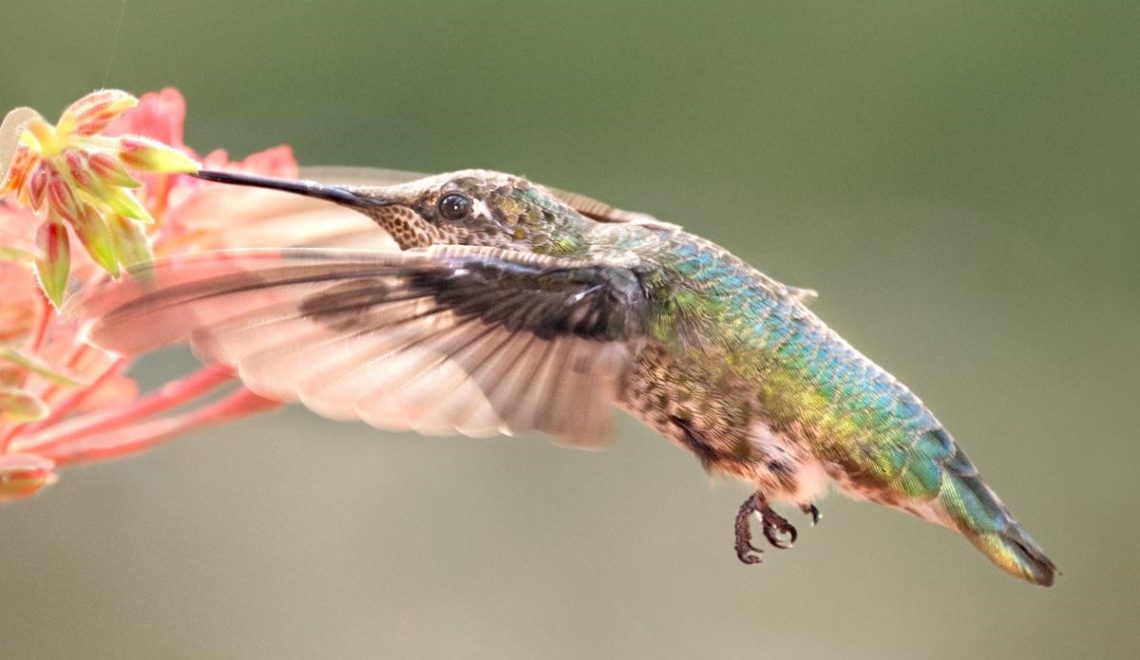
The Flight of a Hummingbird
| For many people the ability of flight catches the imagination more than any other attribute of birds. Different species have specialized physical adaptations that enable them to be proficient at the varieties of flight that are needed to survive and succeed. For example, owls have specialized feathers and large wings to fly silently, a falcons wings are pointed for agility, and quail have short powerful wings built for the escape. Hummingbirds however, are on a whole new level when it comes to flight.
Beyond flying forward like other birds, hummingbirds are unique in their ability to fly in any direction including side to side, straight up or down, and even backwards. Unlike birds like kingfishers, osprey, and kestrels who can hover for short term, hummingbirds hover extensively. If all that were not enough, hummingbirds can even pull the occasional midair backflip. Often their flight is compared to that of insects. Spend any amount of time observing hummingbirds, it comes as no surprise that their physics defying flight has captured not just causal birder attention but also those who study birds. Thanks to advancements in science we are starting to understand this magician of flight. There are many physiological adaptations that contribute to their flight abilities, one of the most distinctive is in the way they move their wings. Almost all birds fly with up and down strokes with the downstroke providing all the lift. Hummingbirds however, generate lift by moving their wings in a forward and backward motion, with their wing tips tracing a horizontal figure 8, that requires their shoulders to pivot 180 degrees and gives them lift from both the top and bottom side. If you would like to learn more about hummingbirds and their adaptations, then please join us this Wednesday, July 29 at 2:30 PST for our virtual class focused on these magnificent little creatures! Click here to register! |

